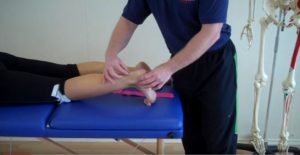 Nobody understands sports injuries a lot better than physical therapists or physiotherapists. Countless athletes have seen their dreams shattered because of sports-related injuries. Some have eventually lost their lives because of the complications that result from concussions as well as fat embolism that gets lodged in the brain or even in a major artery of the heart secondary to a fracture. And while orthopaedic doctors and neurologists will be typically involved in the management of sports-related injuries, its ongoing treatment and rehabilitation will require the expertise of a physical therapist to make sure that you retain optimum functionality of whatever is left after the injury. Unfortunately, I had to learn this the hard way.
Nobody understands sports injuries a lot better than physical therapists or physiotherapists. Countless athletes have seen their dreams shattered because of sports-related injuries. Some have eventually lost their lives because of the complications that result from concussions as well as fat embolism that gets lodged in the brain or even in a major artery of the heart secondary to a fracture. And while orthopaedic doctors and neurologists will be typically involved in the management of sports-related injuries, its ongoing treatment and rehabilitation will require the expertise of a physical therapist to make sure that you retain optimum functionality of whatever is left after the injury. Unfortunately, I had to learn this the hard way.
I enjoy running. In fact, I have participated in several marathons including the Melbourne Marathon and the Melbourne Half. But that was about to change. I was training for the next marathon when I tripped on a large crack on the pavement, landing hard on my knee. I felt a jolt up my spine and my knee started to really throb within the next couple of days. I knew that I had to rest it, apply cold compress, and elevate the rest of my lower limb. But, foolish me, I was more focused on completing my exercise regimen just in time for the marathon. So I didn’t. Only when the pain started getting really unbearable that I decided to see an orthopaedic surgeon. X-ray examination revealed that I had a severely swollen kneecap. You can say I wasn’t surprised. What I was amazed at, however, is the fact that I was given a very unusual prescription: physical therapy. Sure, the orthopaedic surgeon gave me analgesics for the pain but there is not much he can do. According to him, the best healthcare professional to manage my problem is a physical therapist.
I was quite sceptical knowing that physiotherapists only work with world-class professional athletes and sports organizations as well as manage the rehabilitation programs of patients who have recently had a stroke or those who have undergone hip replacement surgery. I know that physical therapy is primarily rehabilitative in nature and as such I was cynical about the idea of getting a physiotherapist manage my swollen kneecap. Is this not supposed to be a domain of the orthopaedic surgeon?
Anyway, the physiotherapy clinic my doctor recommended was nevertheless acceptable for me. I live in Werribbee, just 30-plus kilometres southwest of Melbourne, so it was comforting to know that the Wyndham Physio and Rehabilitation clinic – wyndhamrehab.com.au is also based in Werribbee. At the very least I don’t have to drive all the way to Melbourne just to get the physical rehabilitation. What amazed me, however, was the fact that the clinic’s many clientele were young women like me. Most have musculoskeletal problems or issues in mobility aggravated by pain. They were also at the clinic all raring to manage their pain and immobility issues and get on with their lives.
Physiotherapists are specialists in optimum physical mobility. Where the body needs to move in a certain manner, then they are the ones who needed to be sought. Any issue that compromises or undermines the body’s ability to move efficiently is thus, addressed so that improved functional mobility is achieved.
So what happens during a physiotherapy visit? First, your physical therapist will conduct a very thorough assessment of your health but mostly, will focus on your physical mobility. This means that your muscles, joints, and bones and their respective characteristics will be carefully assessed. Your range of motion and the strength and tonicity of your muscles will be thoroughly evaluated. The stability of your joints as well as your body’s overall flexibility will also have to be assessed in order to come up with a very accurate description of the body’s state of physical mobility. The physiotherapist will then create a comprehensive plan that is primarily composed of three goals: rehabilitate the injured body part, strengthen the surrounding structures particularly the muscles, and prevent further injuries.
Physiotherapy will not address your problems in one sitting, however. In my case, I had to visit Wyndham several times. Each time, my physiotherapist will assist me with stretching and muscle strengthening exercises. I also had to undergo transcutaneous electrical nerve stimulation to help relieve the pain and discomfort, increase muscle strength and tonicity, and improve blood flow to the injured area. At home, I was also advised to apply heat and cold compresses alternately and to perform the physical exercises we do at the clinic.
In 2 months’ time, I was able to regain full functioning of my knee. This really helped me better understand what physiotherapy is all about and how it can benefit individuals suffering from a variety of musculoskeletal problems. You can click here to see my previous article about physiotherapy.
